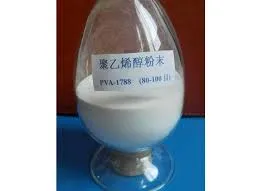The Importance of Redispersible Polymer Powder (RDP) in Modern Construction and Manufacturing
In recent years, Redispersible Polymer Powder (RDP) has gained significant attention in various industries, particularly in construction and building materials. These versatile powders are synthesized from various polymer emulsions and provide outstanding performance enhancements when mixed with dry mortars, adhesives, and other formulations. As the construction landscape evolves, the role of RDP in improving the quality, efficiency, and sustainability of construction materials becomes paramount.
What is Redispersible Polymer Powder?
Redispersible Polymer Powder is a type of dry polymer that can be easily re-dispersed in water, which translates into enhanced performance when it is incorporated into construction materials. When RDP is mixed with cement-based systems, it creates a flexible and durable matrix that significantly improves adhesion, flexibility, and water resistance while also enhancing workability. These powders are integral in formulating products like tile adhesives, mortar, cement, and plaster.
Benefits of RDP in Construction
1. Improved Adhesion One of the primary attributes of RDP is its ability to improve adhesion between surfaces. In applications such as tile installation, RDP allows adhesives to bond more effectively with both the substrate and the tile. This leads to fewer failures and increased longevity of the installations.
2. Enhanced Workability The addition of RDP increases the workability of cement-based mixtures. This means that the blends remain easier to handle and apply, which can speed up construction processes. Improved workability results in a smoother application, reducing the labor intensity required for projects.
3. Flexibility and Durability RDP enhances the flexibility of formulations, allowing for movements and adjustments without cracking or breaking. This is especially important in regions prone to temperature fluctuations and other environmental stresses, making structures more resilient over time.
redispersible polymer powder vaerdp

4. Water Resistance RDP contributes to the water resistance of construction materials, reducing the permeability of the mix. This is particularly beneficial for exterior applications where moisture exposure is a concern. Enhanced water resistance also helps in reducing the risks of mold and mildew development.
5. Sustainability The increasing focus on sustainability in construction has made RDP even more appealing. By improving the performance of existing materials, RDP allows for the reduction of additive usage and enhances the overall durability of products, contributing to more sustainable building practices.
Applications of RDP
Redispersible Polymer Powder finds applications across a spectrum of products in the construction industry
. Common uses include- Tile Adhesives With the need for reliable bonding agents, RDP enhances the effectiveness of tile adhesives, ensuring a strong hold that withstands tension and moisture. - Repair Mortars In repair applications, RDP aids in creating flexible mortars that restore the integrity of damaged structures. - Plasters and Coatings RDP is incorporated into exterior and interior wall plasters, providing superior durability and a smooth finish.
- Self-Leveling Compounds The improved flow characteristics afforded by RDP make it suitable for self-leveling compounds that require optimal performance for proper leveling.
Conclusion
Redispersible Polymer Powder has become an essential component in modern construction and manufacturing. Its unique properties not only enhance the quality and performance of various building materials but also contribute to sustainable and efficient construction practices. As the industry continues to innovate, the use of RDP is likely to expand, leading to even broader applications and improved environmental impacts in the years to come. Thus, understanding and utilizing the benefits of RDP can lead to significant advancements in construction technology.
-
The Versatility of Industrial Additives: Mhec, Hpmc, And Wall Putty SolutionsNewsMar.28,2025
-
The Importance of HPMC in Modern IndustriesNewsMar.28,2025
-
Partnering with Reliable Manufacturers for Optimal ResultsNewsMar.28,2025
-
Enhancing Construction Performance with Redispersible Polymer PowdersNewsMar.28,2025
-
Enhancing Construction and Household Products with Advanced AdditivesNewsMar.28,2025
-
Building Strong Foundations with Key Construction MaterialsNewsMar.28,2025






